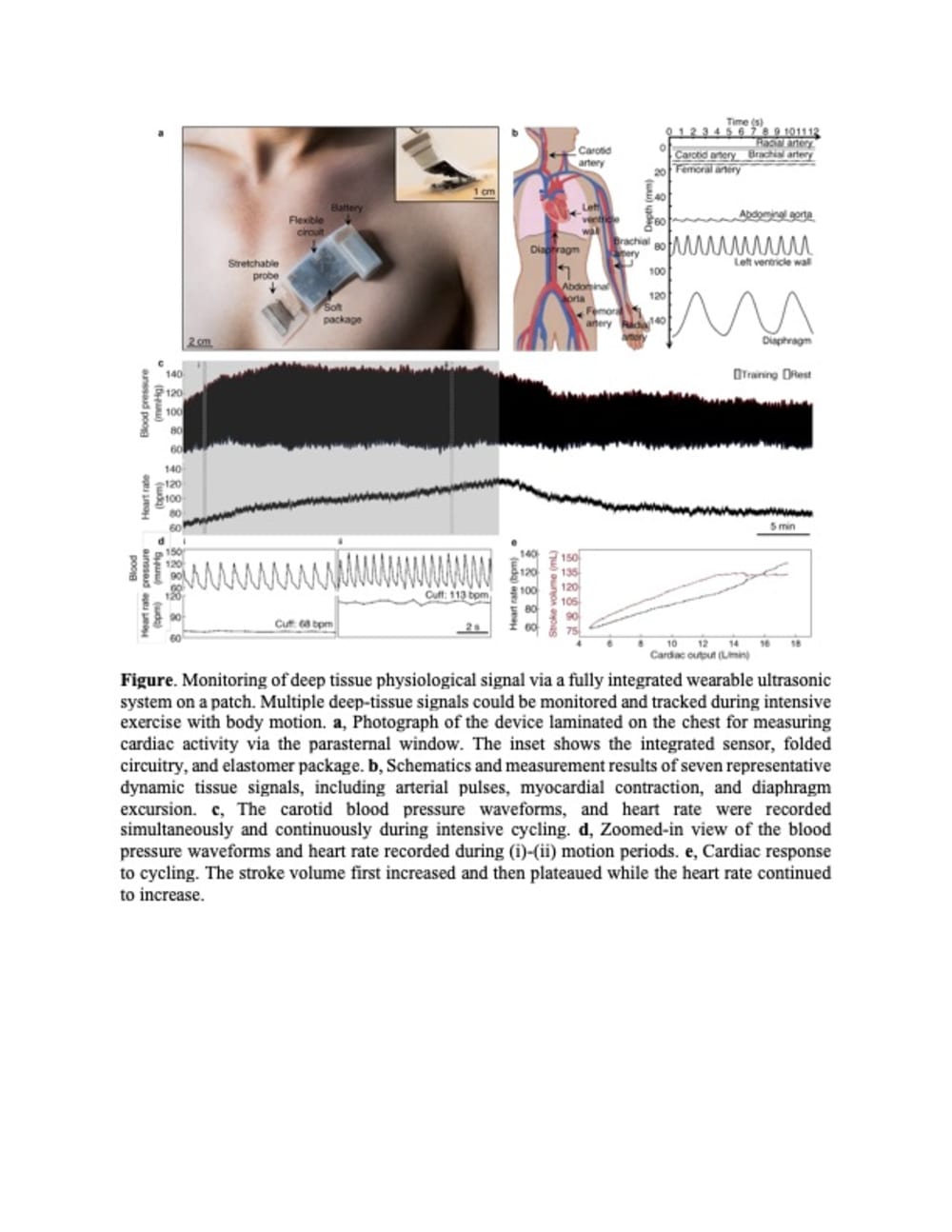
Continuous tracking of physiological signals underneath deep tissue represents clinical significance and challenges to health monitoring. Signals generated by internal organs and deep tissues can better correlate to disease diagnosis and predict severe symptoms. We aim to develop a wearable sensing platform that can interrogate deep tissue physiological signals autonomously and continuously.
Existing wearable electronic devices offer the capability of continuous monitoring but suffer from their limited penetration depth. Therefore, integrating ultrasonic transducers naturally became a solution to interrogate signals deeply underneath the skin sensing with high spatiotemporal resolution. However, conventional ultrasound transducers must be manually operated on motionless patients, and the acquired data should be interpreted by specialized clinicians. These processes are not only time-consuming but also prone to errors and artifacts. Additionally, the backend ultrasound equipment is large-sized and mostly limited to usage in hospitals and clinics. Here, the applicant reported a fully integrated ultrasound system on a patch (USoP) that can enable operator-free monitoring of moving subjects. Moreover, customized artificial intelligence algorithms can process the data acquired by the wearable ultrasound patch autonomously. The resulting technology provides efficient, accurate, and continuous monitoring of human health in various scenarios, with the potential for reducing costs and improving outcomes in healthcare.
The wearable patch that integrated ultrasonic transducers and flexible circuits can capture the tissue motion to reveal natural physiological processes such as circulation and respiration. A deep learning algorithm was also applied to perform autonomous tracking of carotid artery pulse waveforms during exercise. The wearable patch system allows for undisrupted monitoring during intensive physical exercise. Key physiological parameters, including blood pressure waveforms, heart rate, and stroke volumes, can be reliably tracked to reveal the cardiovascular responses to exercises.
The fully integrated USoP makes long-term autonomous surveillance of deep tissue signals possible by breaking three technical barriers. First, the USoP eliminates wire connections by connecting the device and the backend processing system wirelessly, which allows for large-range subject mobility. Second, the USoP uses deep learning-based algorithms to automate the data acquisition and channel selection in real-time, and therefore represents the first wearable device to autonomously track a moving target. Third, deep-learning-enabled data post-processing relieves the human burden and enables potential scale-up. Together, these innovations enable an autonomous wearable ultrasound system capable of monitoring human subjects over the long term. Continuous monitoring of the dynamic changes of the cardiovascular system in response to stressors can benefit a broad range of populations, from athletes who need training optimization, to cardiac rehabilitation patients who require safety measures, and to general high-risk populations for cardiovascular risk stratification and prediction.
Related works have been published in Nature Biotechnology.
-
Awards
-
 2023 Top 100 Entries
2023 Top 100 Entries
Like this entry?
-
About the Entrant
- Name:Muyang Lin
- Type of entry:teamTeam members:
- Sheng Xu
- Software used for this entry:Matlab, PyCharm, Altium Designer


